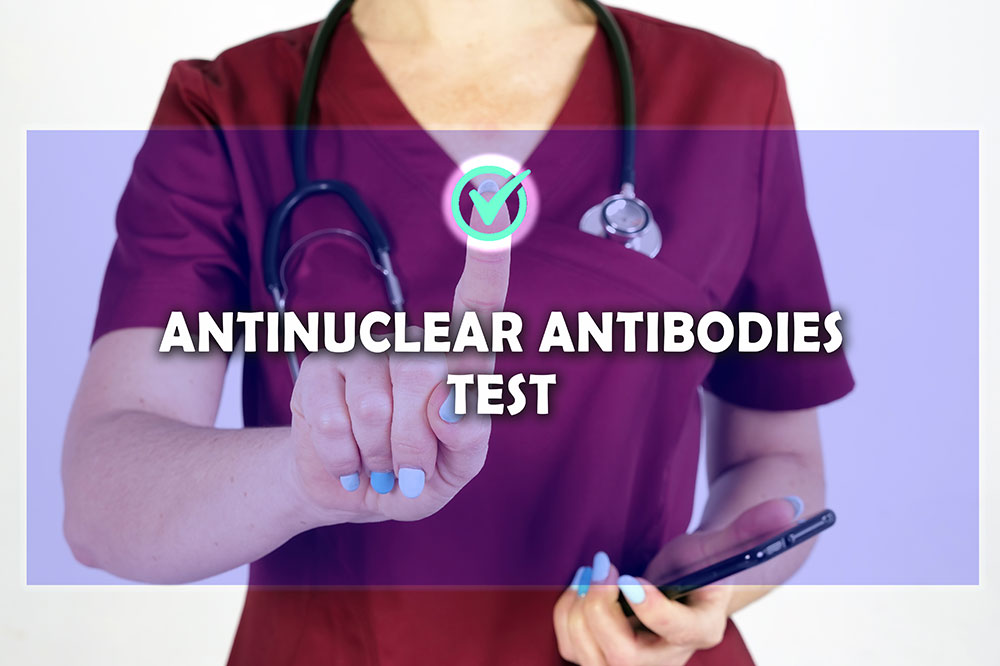
The purpose and procedure of an antinuclear antibody test
An antinuclear antibody (ANA) test is performed to determine or confirm the presence of antinuclear antibodies in an individual’s bloodstream. A minimal amount of antinuclear antibodies in the body is normal. However, when the test indicates a high score, it indicates an autoimmune condition, which might lead to potential health consequences when left untreated. Keep reading for more about the Antinuclear antibody test, its purpose, symptoms diagnosed by this test, and the detailed result prediction.
Antinuclear antibody test – An overview
The immune system produces an abundance of special proteins called antibodies, made by white blood cells in the blood. These antibodies recognize and battle against infectious microbes or harmful elements in the body, preventing several illnesses and infections.
However, the antinuclear antibodies will destroy the own tissues of the body by misrecognizing them as hazardous foreign invaders. These antibodies will attack the cells and damage the muscles, skin, joints, and other body parts.
This process is called an autoimmune reaction which can be detected with the help of an antinuclear antibody test. The test is also called a fluorescent antinuclear antibody, ANA reflexive panel, and antinuclear antibody panel.
When do you require an ANA test?
An individual will be suggested to undergo an antinuclear antibody test when their body shows certain symptoms of an autoimmune disorder. The severity of the signs might vary depending on the affected region in the body. Here are the symptoms for the antinuclear antibody test requirement.
Rashes or skin blisters
Persistent or recurring fever
Light sensitivity
Pain, stiffness or swelling in joints or muscles
Fatigue
Muscle ache
Changes in the skin color
Numbness or tingling in your hands and feet
Hair loss
What are the purposes of the ANA test?
The antinuclear antibody test is generally suggested to diagnose the onset of certain autoimmune conditions. Here are the causes for the antinuclear antibody test.
Systemic lupus erythematosus (SLE) is the most recurrent kind of lupus that affects the skin, heart, lungs, blood vessels, kidneys, brain, joints, and more.
Rheumatoid arthritis (RA) is a chronic joint disease that causes swelling and discomfort in the wrist, hands, and feet.
Scleroderma is another rare autoimmune disease affecting the blood vessels, skin, and organs.
Addison’s disease is an autoimmune illness that occurs due to damage to adrenal glands, resulting in weakness and exhaustion.
Sjogren’s syndrome is also a rare condition that affects the glands responsible for the generation of saliva and tears.
Autoimmune hepatitis is a type of hepatitis that affects the liver cells and results in severe inflammation.
How to prepare for the ANA test?
Whatever the causes for the antinuclear antibodies test, it will be organized similarly to the other blood tests. Therefore there is no need for any special preparation for the ANA test. Your doctor will collect your blood; you can eat or drink normally before the test. Sometimes, the doctor will inform you if you need to take this empty stomach. You should also notify them about any prescriptions and overall health history prior to the test.
What to expect during the ANA test?
After cleansing the area with antiseptic, a tiny sterile needle will be inserted by the doctor to draw the blood sample from a vein in your arm using a tourniquet. Then it will be collected in a vial or test tube and sent for analysis. The test will take only a few minutes, and after collection, you will be given a bandage to prevent bleeding. After the procedure, you may experience slight swelling or bruising on the injected area that will resolve on its own in a few days.
How to interpret the results of the ANA test?
Antinuclear antibody tests can show either positive or negative results. It indicates the following respectively:
Positive
A positive result from the ANA test confirms the presence of autoimmune disease, which occurs due to the antinuclear antibodies in the blood. In certain cases, even a healthy individual can be detected with antinuclear antibodies. It could be due to certain prescriptions. Your healthcare professional might suggest a few more supplementary tests to confirm the condition in such circumstances.
Negative
A negative result for the ANA test indicates that there are no antinuclear antibodies in your blood, which in turn, you are not diagnosed with autoimmune illnesses. However, remember that a negative result on ANA is insufficient to eliminate the possibility of the illness.
What is the treatment for a positive ANA test?
Upon confirming the autoimmune illness by positive ANA results, your healthcare professional might instruct you about the next course of action through other confirmatory tests. Whatever the case, autoimmune illnesses cannot be cured. However, the prescription plan or other treatment for the results of an antinuclear antibody test can reduce or control the symptoms.




